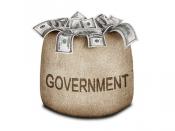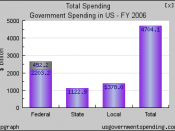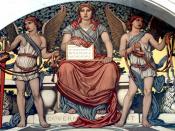The Fiscal Policy simulation provides a background for implementation of key concepts for economics and the dilemmas of a government. Several questions are proposed such as, "Why is a high budget deficit cause for concern? Is it better to have a budget surplus? What can the government do to fight inflation? How does an economy come out of a recession?" These questions are the everyday affairs for the government of the country of Erehwon. The simulation helps to become more familiar with some tools of fiscal policy that governments can use to keep the economy in check and also to bring the economy closer to its long-run potential output.
Effects of Changes in Fiscal Policy
The effects of the changes in fiscal policy during the simulation either brought the economy of the country of Erehwon closer to its long-run potential output or further from its long-run potential output. The fiscal policy tools implemented and practiced to bring about these changes were: Government spending on infrastructure, Government spending on education programs for low-income students, and changes in income tax rates.
The effects presented themselves in Real GDP, Inflation, Unemployment, Budget Deficit, and Popularity Indicator to name a few. The effects for fiscal policy of 2xx6 resulted in an over-all rating of 'Ideal President'. An increase in all three areas, government spending on infrastructure, government spending on education, and income tax rate, setup the economy to achieve its potential output in the long run and also led to an increase in popularity. Inflation remained the same while the policies implemented led to an increase in real GDP allowing for a rise in real income and a fall in unemployment. However, inflation slightly grew from where it was previously indicated. Fiscal policy implemented for year 2xx8 resulted in a 'Well Ruled' rating. The...


